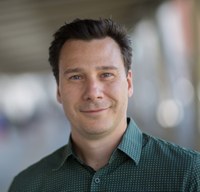A multidisciplinary team of investigators, including from the University of North Carolina Lineberger Comprehensive Cancer Center, the Vanderbilt University Medical Center, King’s College and the University of California, San Francisco, has discovered how mouth stem cells may uniquely be equipped to help improve healing in other parts of the body after disease or injury.

The tissues of the mouth are constantly under attack – from the microbes that already reside there to those in food – but they have a unique feature. They can heal quickly and often without any scarring.
The tissues can do this throughout life without showing the signs of aging we typically see in skin due the stem cells that exist in the mouth. Despite this unique feature, mouth stem cells are not well understood.
The team of researchers, led by investigators Kevin M. Byrd, DDS, PhD, of the UNC Adams School of Dentistry, and UNC Lineberger’s Scott Williams, PhD, sought to understand how stem cells in the mouth balance making new cells with removing unneeded cells. Their findings are published in the journal Cell Stem Cell.
Research findings
The team was surprised to discover that cell creation and removal happened very differently throughout the mouth. For instance, the stem cells in the roof of the mouth were mixed – some divided often, while others divided less frequently. Other parts of the mouth appeared uniform – all of the stem cells seemed to be continually dividing.
They were particularly interested in the cells that divided less frequently because these types of cells play an important role in healing in other parts of the body. The team found these cells were activated immediately after an injury, such as burning the roof of the mouth while eating.
The team also identified that food type or changes in diet could influence how fast the cells divided. For example, a soft food diet caused the stem cells to divide less often and hard food caused them to divide much faster right where chewing occurs.
These findings indicate that oral stem cells are acutely sensitive to their environment and can respond quickly to changes or stressors.
“How these cells do this even as we age is unclear, but we now think these cells may become an important model system for studying how stem cell populations respond to stress,” Byrd said. “For example, we know that the roof of the mouth rarely gets cancer compared to other places in the mouth, and how these cells are able to both protect us from frequent injury but also resist making oral cancer is fascinating to consider.”
Continuing research
Not only does the study highlight the unique abilities of oral stem cells compared to similar tissues, like the skin, but also how these cells may become models for understanding rare disease.
The findings could be important to understanding how oral cancers develop, and why some sites in the mouth are more prone to cancer than others.
“This type of proliferative and molecular heterogeneity is unprecedented in this type of tissue,” said Williams, a member of the UNC Lineberger Comprehensive Cancer Center. “Now that we’ve found these stem cells, and can identify and track them, the next challenge is to understand how they behave in the context of oral cancer.”
Authors and Credits
Natalie C. Piehl; Bethany E. Wagner; Kendall J. Lough, and Jeet H. Patel, from the UNC-CH School of Medicine are also co-authors on this study.
This study was supported by the National Institutes of Health and the National Institute of Dental and Craniofacial Research (NIH/NIDCR K08DE026537).
This story was adapted from a story by the UNC Adams School of Dentistry.
